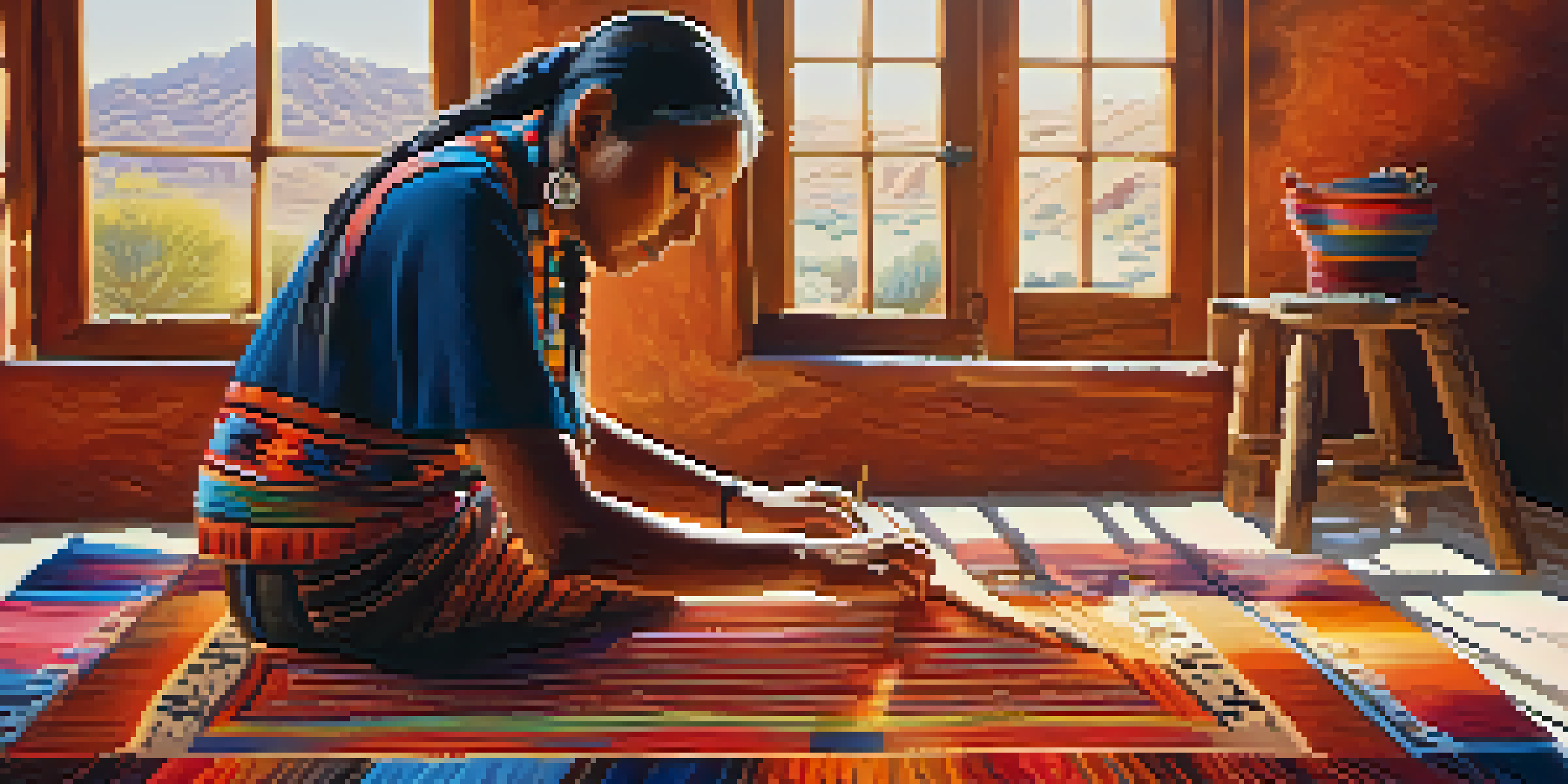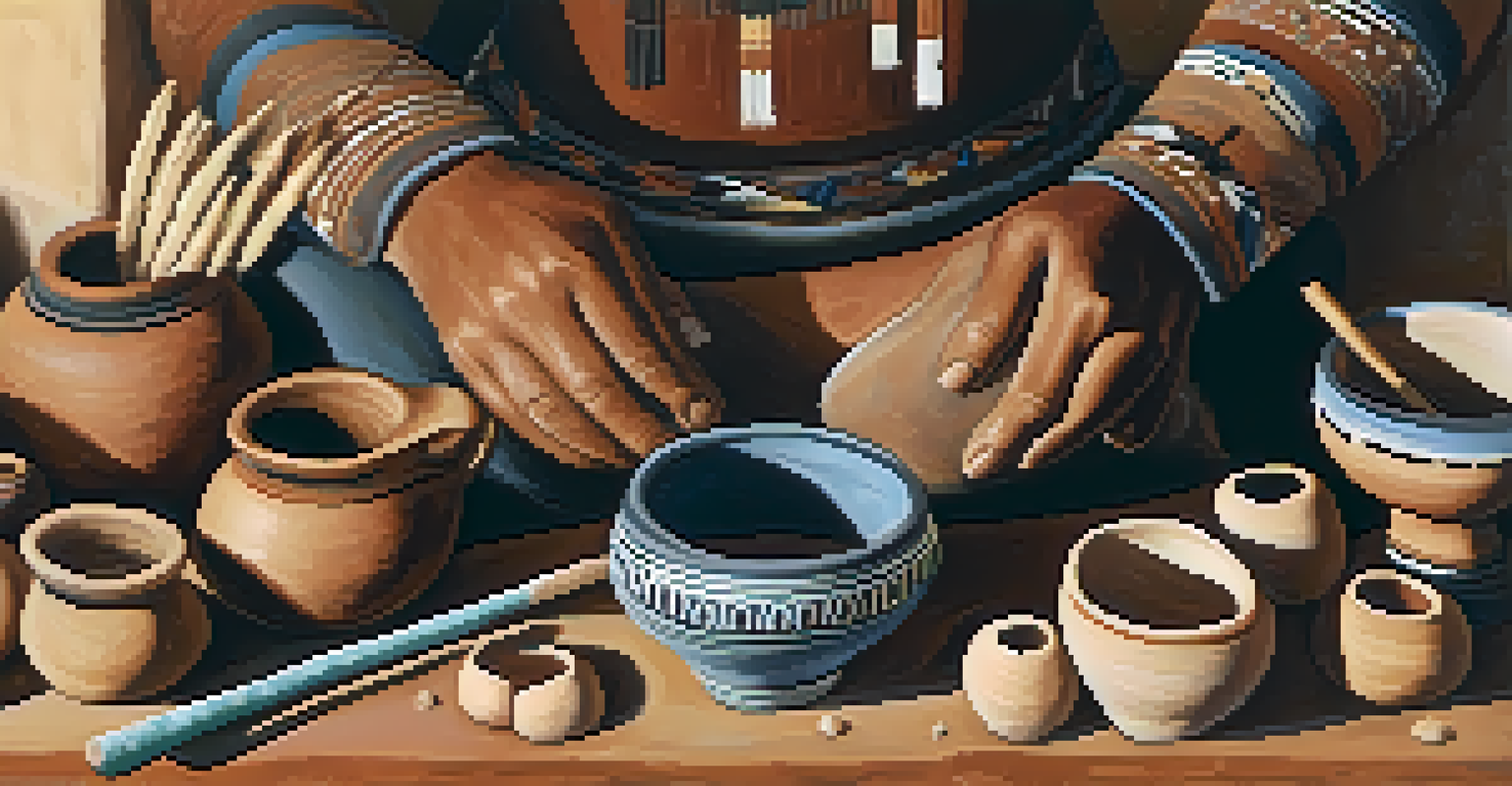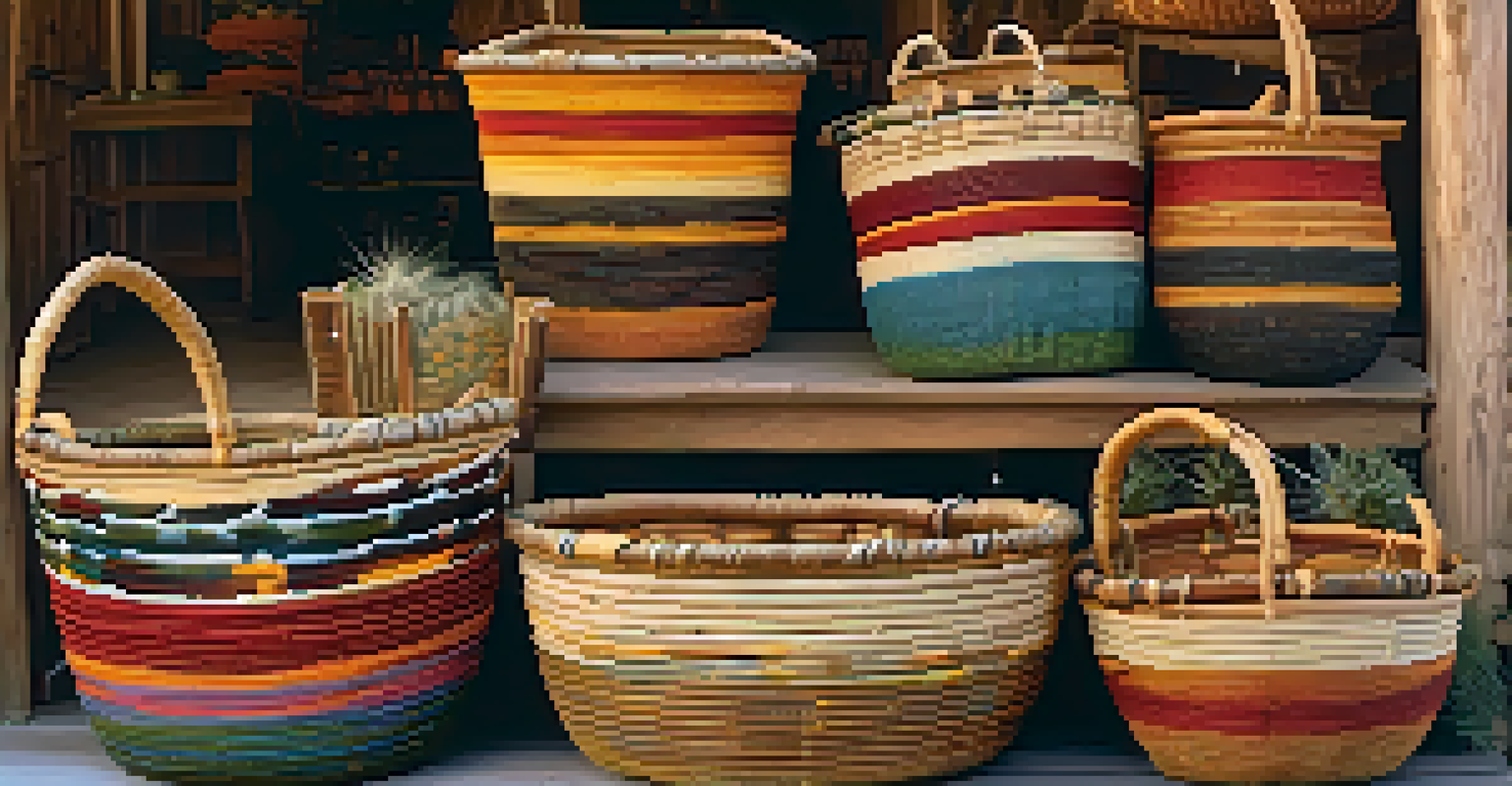Traditional Art Forms of Native American Tribes in Sedona

An Overview of Native American Art in Sedona
Sedona, Arizona, is not only known for its stunning red rock formations but also for its deep cultural roots among Native American tribes. The area is home to several tribes, including the Navajo, Hopi, and Apache, each contributing unique art forms that reflect their rich heritage. Traditional art serves as a vital way for these communities to express their identity and preserve their history.
Art is the most beautiful of all lies.
From pottery to weaving, the art forms of these tribes are often intertwined with their spiritual beliefs and connection to nature. For example, many Navajo artists incorporate symbols and motifs that represent the earth, sky, and their ancestors in their work. This deep-seated connection to the environment is a recurring theme across various art forms in the region.
Visiting Sedona offers a unique opportunity to engage with these traditional art forms, whether through local galleries, art fairs, or cultural events. It’s a chance to appreciate the craftsmanship and stories behind each piece, providing a deeper understanding of the Native American experience.
Navajo Weaving: A Timeless Tradition
Navajo weaving is one of the most celebrated traditional art forms in Sedona, renowned for its intricate patterns and vibrant colors. The art of weaving has been passed down through generations, with each weaver infusing personal stories and cultural symbols into their textiles. Wool from sheep, often dyed with natural pigments, serves as the primary material, creating beautiful rugs and blankets.

The designs in Navajo weavings often hold significant meanings, representing elements of nature or historical narratives. For instance, the 'Spider Woman' motif symbolizes creativity and the weaving of life itself. This art form not only serves practical purposes but also acts as a canvas for storytelling, preserving the tribe's history and beliefs.
Native American Art Reflects Heritage
The art forms of Native American tribes in Sedona express their cultural identity and preserve their rich histories.
Visitors to Sedona can find authentic Navajo rugs at local markets or galleries, supporting the artists while bringing home a piece of living history. Engaging with Navajo weavers allows for a deeper appreciation of their craft and the cultural significance behind each piece.
Hopi Pottery: A Reflection of Spirituality and Nature
Hopi pottery is another remarkable traditional art form, showcasing the tribe's deep connection to the earth and spirituality. Unlike other pottery styles, Hopi artists often use traditional techniques, such as hand-coiling and natural clay, to create their pieces. The pottery is frequently adorned with intricate designs that reflect the tribe's beliefs and stories passed down through generations.
Every artist dips his brush in his own soul, and paints his own nature into his pictures.
The process of creating Hopi pottery is labor-intensive and requires a deep understanding of the materials and techniques. Artists often gather clay from sacred sites, further infusing their work with spiritual significance. Each piece is unique, often depicting elements like rain, corn, and animals, which hold importance in Hopi culture.
Visitors to Sedona can explore Hopi pottery in local galleries and craft shops, providing a wonderful opportunity to learn about the artists' techniques and cultural heritage. Purchasing a piece of Hopi pottery means supporting a tradition that has endured for centuries, while also bringing a touch of authenticity into your own home.
Apache Basket Weaving: Crafting a Legacy
Apache basket weaving is a beautiful and functional art form that showcases the tribe's resourcefulness and creativity. Traditionally, Apache women would weave baskets using materials like willow, sedge, and other natural fibers, creating items for everyday use. However, these baskets are often adorned with intricate designs that reflect the tribe's culture and environment.
Each basket tells a story, whether it's a simple gathering basket or a more complex decorative piece. The patterns often draw inspiration from the surroundings, such as the shapes of plants or landscapes, making each piece a work of art that represents the Apache's connection to their land. This tradition is not just about creating functional items; it’s about preserving a way of life.
Storytelling in Art Enhances Meaning
Through various art forms, Native American artists convey important narratives that connect past traditions to present experiences.
In Sedona, you can find Apache baskets at local craft fairs and galleries, offering a glimpse into this rich tradition. Supporting Apache artisans helps ensure that these skills are passed down to future generations, keeping the craft alive while enriching the cultural tapestry of the area.
The Role of Storytelling in Native American Art
Storytelling is a crucial element in Native American art, serving as a means of preserving culture and history. Through various art forms, artists convey important narratives that reflect their experiences, beliefs, and traditions. This storytelling aspect adds layers of meaning to the artwork, making it not just visually appealing but also deeply significant.
For instance, many Native American artists use their art to depict creation stories, legends, and historical events. These narratives often emphasize themes of harmony with nature, community, and resilience, resonating with both tribal members and visitors alike. Art becomes a bridge that connects the past with the present, fostering understanding and appreciation.
Engaging with Native American art in Sedona provides an opportunity to not only admire the craftsmanship but also to delve into the stories behind the pieces. By learning about the narratives woven into the artwork, visitors can gain a deeper appreciation for the culture and values of the tribes.
Cultural Festivals Celebrating Native American Art
Sedona hosts various cultural festivals that celebrate the art and traditions of Native American tribes, providing a vibrant showcase of creativity. These events often feature art exhibits, live demonstrations, and performances that highlight the rich cultural heritage of the region. Attending these festivals is a fantastic way to immerse yourself in the local culture and support the artists directly.
One notable event is the Sedona Native American Festival, which brings together artists, musicians, and dancers from different tribes. This festival not only showcases a wide range of art forms but also serves as a platform for cultural exchange, fostering dialogue between Native American communities and visitors. Participants can learn about traditional practices while enjoying the vibrant atmosphere.
Cultural Festivals Showcase Art
Sedona's cultural festivals celebrate Native American art and traditions, providing a vibrant platform for community engagement and cultural exchange.
These festivals are more than just art shows; they are a celebration of identity and resilience. By attending, you not only enjoy a unique cultural experience but also contribute to the preservation of these traditions for future generations.
Preserving Traditional Art Forms for Future Generations
The preservation of traditional art forms among Native American tribes is essential for maintaining cultural identity and heritage. As modern influences encroach, there is a growing concern about the loss of these traditional practices. Many tribes are actively working to keep their artistic traditions alive through workshops, mentorship programs, and community initiatives.
Artists are increasingly recognizing the importance of educating younger generations about their cultural heritage. By involving youth in the creation of traditional art, tribes ensure that these skills are not only preserved but also adapted for future generations. This focus on education helps strengthen community bonds and fosters pride in cultural heritage.

Visitors to Sedona can play a role in this preservation by supporting local artisans and participating in cultural events. Purchasing traditional art, attending workshops, or simply engaging in conversations about the significance of these art forms can contribute to their survival and appreciation.
Conclusion: The Living Legacy of Native American Art
The traditional art forms of Native American tribes in Sedona represent a living legacy that continues to evolve while honoring the past. Each piece of art tells a unique story, reflecting the culture, beliefs, and history of the tribes that create them. By exploring these art forms, we not only appreciate their beauty but also gain insight into the rich tapestry of Native American life.
Engaging with this art fosters a deeper understanding of the values and traditions that shape the identities of these communities. It’s a reminder of the importance of preserving cultural heritage in our rapidly changing world. In Sedona, the vibrant art scene offers a unique opportunity to connect with these traditions in a meaningful way.
Ultimately, the traditional art forms of Native American tribes serve as a bridge between the past and the future, inviting everyone to join in the appreciation and celebration of this rich cultural heritage. So next time you visit Sedona, take a moment to explore the art that tells these powerful stories, connecting you to the spirit of the land and its people.